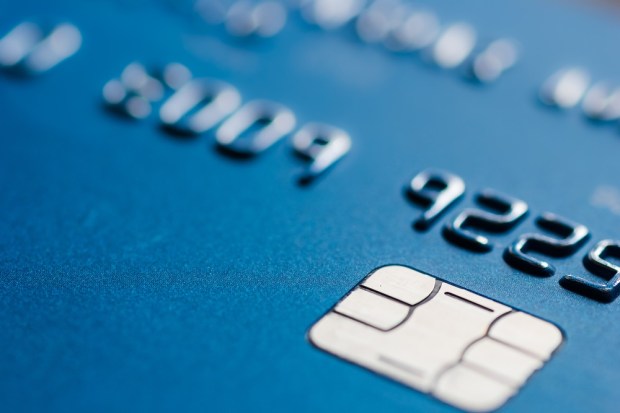What Prepaid Card Rules Did On Their Summer Vacation

Prepaid cards have had a full year on the regulatory front, and the year isn’t over yet.
Last week, the Credit Union National Association (CUNA) wrote the Consumer Finance Protection Bureau (CFPB) — the regulatory agency that authored the new prepaid card rules — asking for both a new round of reconsiderations of one of the rule’s more controversial sections; as well as more time for implementation.
The credit unions, the trade agency contends, are not opposed so much to the rule being proposed. They don’t like being put behind the innovation eight ball. They argue that some of the structural problems with the rule when wedded with its aggressive implementation timeline will make it hard for issuers to comply.
If they can’t comply, they say they can’t compete.
“We continue to urge the Bureau to limit new regulatory requirements on credit unions that offer prepaid accounts, so such accounts remain accessible and so credit unions and other issuers remain innovative in the payments space,” the letter reads.
It might seem unlikely that the CFPB would chose to revise a rule they settled on a little under a year ago, especially a rule that has already survived a potential legislative challenge from a hostile Congress.
However, it would not be a wholly unprecedented move on the agency’s part of late to revisit certain elements of their rule-making. Earlier this summer, the Consumer Financial Protection Bureau proposed its own set of tweaks to its rules related to Regulations E and Z and disputed charges and cards connected with digital wallets. Those regulation tweaks are documented in the Federal Register.
Those changes, however, did not touch the parts of the rule more widely held to be controversial.
The Mainly Controversial Points
The prepaid card regulations, upon going into effect last October, brought up a variety of concerns. But the source of contention for many issuers is that it lumps about 15 different types of prepaid card products currently in the market today without regard to the features and functions of those products, assigning a single rule to rule them all. The question many in the prepaid industry have asked is whether a one-size-fits-all solution can work for an industry that comes in so many different sizes.
The main complaint, however, is the new rule’s move to place prepaid cards with overdraft features under the rubric of Regulation Z — the same rules that govern credit card products and not overdraft requirements under Regulation E, which applies to debit card products tied to checking accounts. The former means that prepaid card issuers are now obliged to do credit checking and verify a user’s ability to repay each time a prepaid card overdrafts.
Critics, like Brad Fauss, president and CEO of the Network Branded Prepaid Card Association (NBPCA), pointed out that, among the problems with this reclassification, it doesn’t logically make sense. Prepaid cards function much more like debit products than credit products. Further, most prepaid overdrafts are less than $50 and are paid back within a day or two at most.
Moreover, Fauss told Karen Webster in an interview about the new regulations last year, that more than not making sense, the new rules in this regard are almost certainly more likely to harm than help consumers.
Income variability, he said, has become more of an reality in the U.S. with the rise of the gig economy. Eliminating valuable tools from those consumers, including overdraft protection, doesn’t make the underlying problem go away. Worse yet, not having that overdraft protection as a backdrop may force those customers to find other — and potentially onerous — tools or methods of covering shortfalls, or risk incurring late fees on bills with which they use those cards to pay.
“You’re potentially taking those consumers’ tools away, so they will be left relying on family or friends or less safe means to borrow money, which will often cost them many times more than a prepaid card overdraft fee,” Fauss noted. “There aren’t many good options remaining for these consumers if overdraft isn’t available.”
As of now, that’s the lay of the prepaid card land, since the new rules go into effect in April 2018. Some thought (hoped?) that the new rules might never see the light of day thanks to the Congressional Review Act (CRA).
However, there is a finite window during which legislators can use the CRA, and in May that window closed. The prepaid regulations as they are written remain on the books.
What’s Next
April 2018 is the witching hour for prepaid cards, something that CUNA is working hard to extend.
“We urge the Bureau to further delay the effective date until at least October 2018. This will provide issuers and vendors adequate time to make remaining changes required by the final rule as well as substantive changes resulting from this proposal.”
Will the CFPB do it? Hard to say. They have made tweaks, fairly straightforward ones, albeit, and the regulations as written have sailed past a possible challenge from Congress.
The prepaid industry has more or less made peace with the state of play over the rules themselves. The point that CUNA has raised on behalf of its members is their very strong desire not to be put in a position where they can’t deliver the services and products their customers want and need.
How that balance can be struck — if it even can be — remains to be seen. But at least the conversation is still going.
